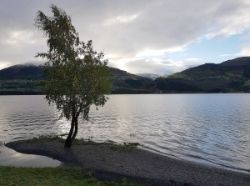There will be a regular LATICE seminar about changes and trends in flows on March 6, at 14:15 o’clock in Auditorium 1 in the Geology Building.
On the program there are two speakers (title/name/affiliation):
"Trends in seasonal Low Flow in Norway”
- Sigrid Jørgensen Bakke, PhD student, GeoHyd, Department of Geosciences
"Future shifts in extreme low-flow regimes in Alpine regions”
- Manuela Brunner, Postdoc, Swiss Federal Institute for Forest, Snow and Landscape Research (WSL)
Abstract: Extreme low and high flows can have adverse economical, societal, or ecological effects and are in many regions expected to become more severe due to climate change. Besides low and high flows, the whole flow regime is subject to changes. Knowledge on future changes in such regimes is important because regimes contain information not only on extremes but also on the conditions prior to the dry and wet season. Changes in individual low-flow characteristics, high-flow characteristics, and flow regimes under normal conditions have been thoroughly studied. In contrast, not much is known about changes in future extreme flow regimes. We here propose two methods for the estimation of extreme flow regimes and apply them to discharge time series simulated for future climate conditions in Switzerland. This allows for the detection of future changes in extreme low- and high-flow regimes. The first method relies on frequency analysis performed on annual flow duration curves. The second approach performs frequency analysis on the discharge sums of a large set of stochastically generated annual hydrographs. Both approaches were found to produce similar 100-year regime estimates when applied to a data set of 19 hydrological regions in Switzerland. Our results show that changes in extreme low- and high-flow regimes are distinct in rainfall- and melt-dominated regions. In rainfall-dominated regions, the minimum discharge decreases by up to 50% for the extreme low-flow regimes and a bit less for high-flow regimes. In contrast, the maximum increases by the same order of magnitude. In melt-dominated regions, the direction of change is opposite from the one in rainfall-dominated regions. The minimum discharge of extreme regimes is increasing by up to 100% while the maximum discharge is decreasing by less than 50%. Future extreme low- and/or high-flow regime estimates can be used in climate impact studies and provide guidance in water resources planning and management.
--------------
The seminar is open for all interested in the topic of the seminar.
Welcome!
